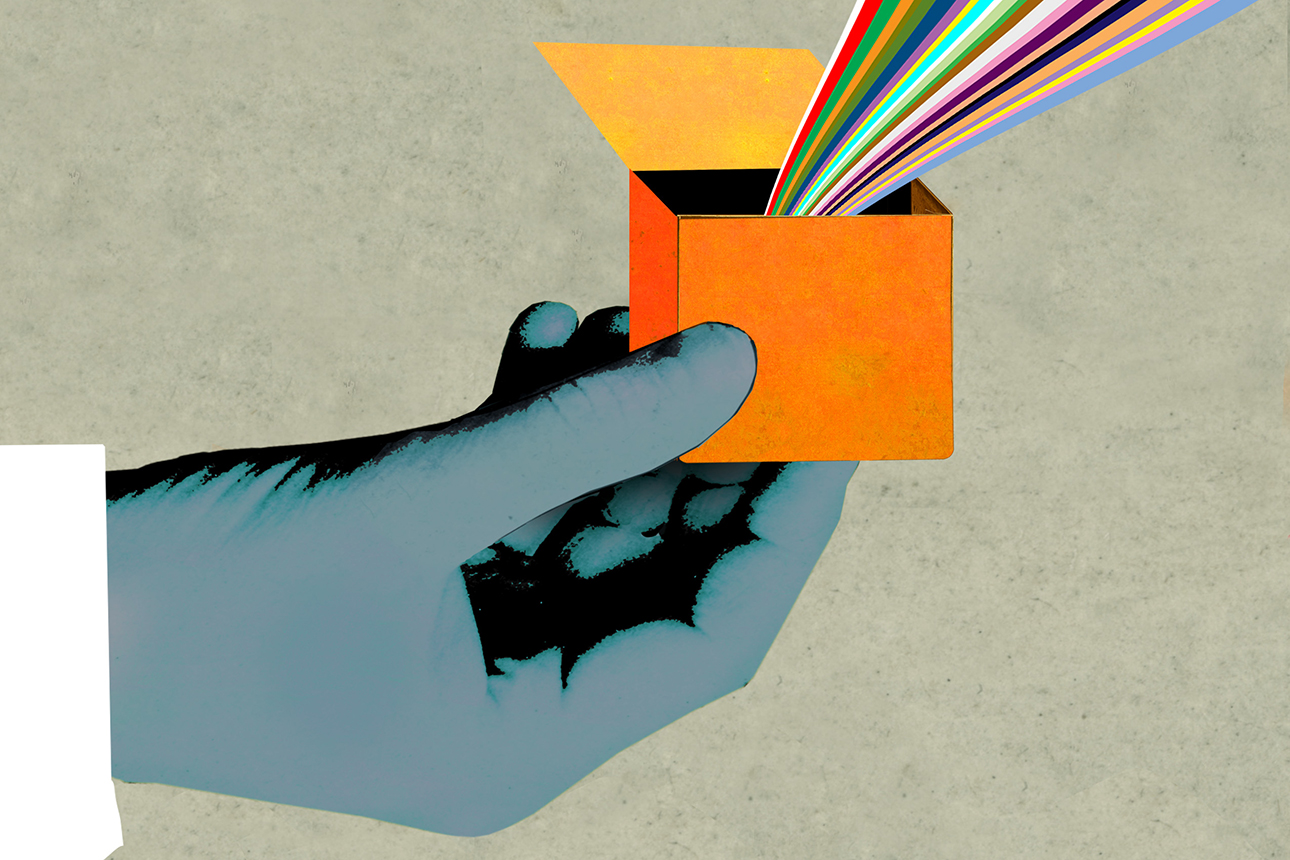How Collaboration Needs Change From Mind to Marketplace
Identify and pursue truly novel concepts by helping the innovators in your organization collaborate in the right ways at the right times.

Image courtesy of Michael Morgenstern/theispot.com
It can be a long slog from initial concept to final product. Even in organizations that pride themselves on rapid iteration and experimentation, most truly novel ideas either stall out at some point in development or lose their originality along the way. How do you defy those odds? By adjusting collaborative behavior to meet the idea wherever it is in its journey from mind to marketplace.
That journey entails four phases: idea generation; concept elaboration through tests or prototypes that flesh out the idea and assess feasibility; internal promotion to get the sponsorship needed to move forward with a product; and implementation, which involves finalizing plans and specifications, creating the product, and delivering it. In my nearly 20 years researching creativity and innovation, I’ve found that as an idea progresses from phase to phase, its collaborative requirements change. (See “The Idea Journey at a Glance.”) Here, we’ll look at how those needs shift and how innovation managers can help people adapt accordingly instead of relying on go-to connections and patterns of behavior.
Get Updates on Innovative Strategy
The latest insights on strategy and execution in the workplace, delivered to your inbox once a month.
Please enter a valid email address
Thank you for signing up
If novel ideas moved in a straight line from conception to completion, it would be easier for them to gain traction. However, they often loop back to previous phases or cycle between phases several times, which complicates the journey and stalls progress. When this happens, an idea is likely to be stripped of its novelty so that a more mundane version can move forward with less resistance. Novel ideas are inherently risky. Because they are unusual, they lack strong precedent, and it’s tough to cite clear examples of success. So convincing stakeholders to invest in them can be difficult. Thus, high-potential novel ideas tend to devolve into safer, less inspiring ones that ultimately get the green light.
That’s hardly the stuff of competitive break-throughs. By taking a more adaptive approach to creative collaboration, your organization can increase its odds of bringing truly new ideas to market. Let’s begin by examining the core collaborative needs of each phase of the idea’s journey.1
Sparking Idea Generation
Each new concept originates as a spark of creative inspiration.
References
1. J.E. Perry-Smith and P.V. Mannucci, “From Creativity to Innovation: The Social Network Drivers of the Four Phases of the Idea Journey,” Academy of Management Review 42, no. 1 (January 2017): 53-79.
2. J.E. Perry-Smith, “Social Yet Creative: The Role of Social Relationships in Facilitating Individual Creativity,” Academy of Management Journal 49, no. 1 (February 2006): 85-101.
3. P.V. Mannucci and J.E. Perry-Smith, “‘Who Are You Going to Call?’ Network Activation in Creative Idea Generation and Elaboration,” Academy of Management Journal (April 12, 2021), https://journals.aom.org, forthcoming in print.
4. J.E. Perry-Smith, “Social Network Ties Beyond Nonredundancy: An Experimental Investigation of the Effect of Knowledge Content and Tie Strength on Creativity,” Journal of Applied Psychology 99, no. 5 (September 2014): 831-846.
5. J.E. Perry-Smith and R.W. Coff, “In the Mood for Entrepreneurial Creativity? How Optimal Group Affect Differs for Generating and Selecting Ideas for New Ventures,” Strategic Entrepreneurship Journal 5, no. 3 (September 2011): 247-268.
6. L. Thompson, “Improving the Creativity of Organizational Work Groups,” Academy of Management Executive 17, no. 1 (February 2003): 96-109.
7. Mannucci and Perry-Smith, “‘Who Are You Going to Call?’”
8. J.M. Berg, “Balancing on the Creative Highwire: Forecasting the Success of Novel Ideas in Organizations,” Administrative Science Quarterly 61, no. 3 (July 2016): 433-468.
9. R.S. Burt, “Structural Holes and Good Ideas,” American Journal of Sociology 110, no. 2 (September 2004): 349-399.
10. J.S. Coleman, “Social Capital in the Creation of Human Capital,” American Journal of Sociology 94, supplement (1988): S95-S120.
11. A. Grant, “Originals: How Non-Conformists Move the World” (New York: Penguin Books, 2017).
12. Mannucci and Perry-Smith, “‘Who Are You Going to Call?’”
13. H. Choi and L. Thompson, “Old Wine in a New Bottle: Impact of Membership Change on Group Creativity,” Organizational Behavior and Human Decision Processes 98, no. 2 (November 2005): 121-132.
14. E. Catmull, “How Pixar Fosters Collective Creativity,” Harvard Business Review 86, no. 9 (September 2008): 64-72.
15. J. Mueller, “Creative Change: Why We Resist It ... How We Can Embrace It” (Boston: Houghton Mifflin Harcourt, 2017).
